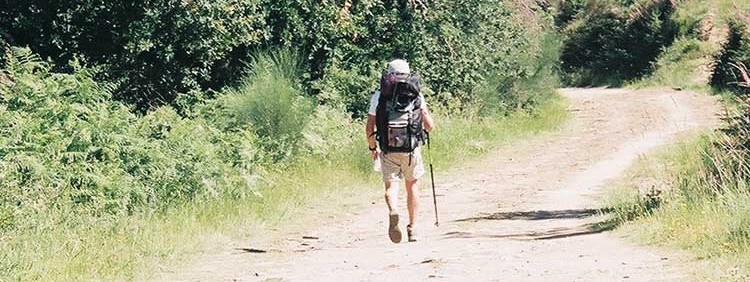Walking in the footsteps of history
The history of the Camino de Santiago (“Way of Saint James”) dates back to the year 813 AD when the bishop of Iria Flavio informed King Alfonso II of Asturias that a tomb had been discovered containing the remains of the apostle Santiago (St James). St James had been decapitated in 44 AD in Jerusalem, but his followers had stolen the body and transferred it by boat to Spain, supposedly burying it at Iria Flavio.
Once the word was out that the remains of St. James had been found, pilgrims began to pay homage at this holy site, which over time became the town of Santiago de Compostela. The Cathedral of Santiago, consecrated in 1128, stands over the tomb of the apostle and the faithful have been flocking here ever since, following a series of well-worn paths known collectively as the “Camino de Santiago” which stretch across northern Spain and Portugal.
James Hughes, partner in All Ways Spain, is an experienced guide of the Camino, having biked or walked it with groups on over 40 occasions, and here describes what a typical Camino tour is like:
“On the Camino one meets fellow-walkers from all over the globe, with a wealth of tales and experiences that you share with them as you walk. I never cease to marvel at the various reasons that people choose to undertake the Camino de Santiago! Meeting local people, too, forms a rich part of this adventure — on the Camino villagers feel honoured to see pilgrims pass through their village. As for traffic, all you are likely to encounter for much of the way are herds of gentle, lazy cows as they return to their village barns in the late afternoon…
Although the full Camino Francés is a six weeks walk from the Pyrenees to Santiago, the route I have most often guided begins in León. This is a marvellous city, endowed with outstanding medieval monuments such as the gothic cathedral and the Basilica of San Isidoro (housing tombs of the Kings of León). The following day we start on the Camino at the bridge of Órbigo, a Gothic structure which has survived the ravages of time, floods and warring armies to appear to modern-day pilgrims more or less as it would have done in the 15th century. Indeed, during the week we walk over many venerable bridges, pass stone crosses, and see countless churches, monasteries and chapels, both ornate and simple, manifestations of the devotion of the centuries of pilgrims who have passed this way.
Pilgrims, modern or ancient, all need feeding and watering of course and one of the highlights on any tour are the local specialities that we encounter, such as the excellent local wines from the Bierzo region, the empanadas – pastries stuffed with meat or fish – in the town of Cacabelos, and the famous pulpo a la gallega (octupus Galician style) as we near the coast. Many of the hotels we stay in are on the Camino itself, meaning we can walk straight out of the front door to begin our day’s walk. One of my favourite hotels is the one near Portomarín on account of the owner Mario’s jovial hospitality, great food, and local wine direct from his bodega!
As for the many fascinating places that we pass through I would single out maybe two: Villafranca del Bierzo, an old town steeped in the traditions of the Camino with its important Romanesque church (which, incidentally, hands out indulgences for pilgrims too sick to make it all the way to Santiago!) and the old celtic village of O’Cebreiro. Arriving here brings us along one of the most beautiful stretches of the Camino, through gentle rolling countryside and a landscape that is truly pastoral. An added bonus that evening is hearing the monks chant evening prayers in plainsong at the famous monastery of Samos.
Journey’s end, Santiago de Compostela, is one of Spain’s most attractive cities, rich in atmosphere and tradition. A university city and a site of pilgrimage for over eleven centuries, it has been the site of dynamic exchanges of ideas and culture, a destination for many outsiders, and yet at the same time it represents Galicia — an area which historically has been profoundly rural and conservative. The last night’s dinner on a Camino tour is always a joyous occasion: I have some wonderful memories of people’s contentment and sense of achievement after finishing the Camino in such a special place as the magnificent Plaza de Obradoiro in front of the cathedral. Hard to describe…you are better to do it and see for yourself!”
